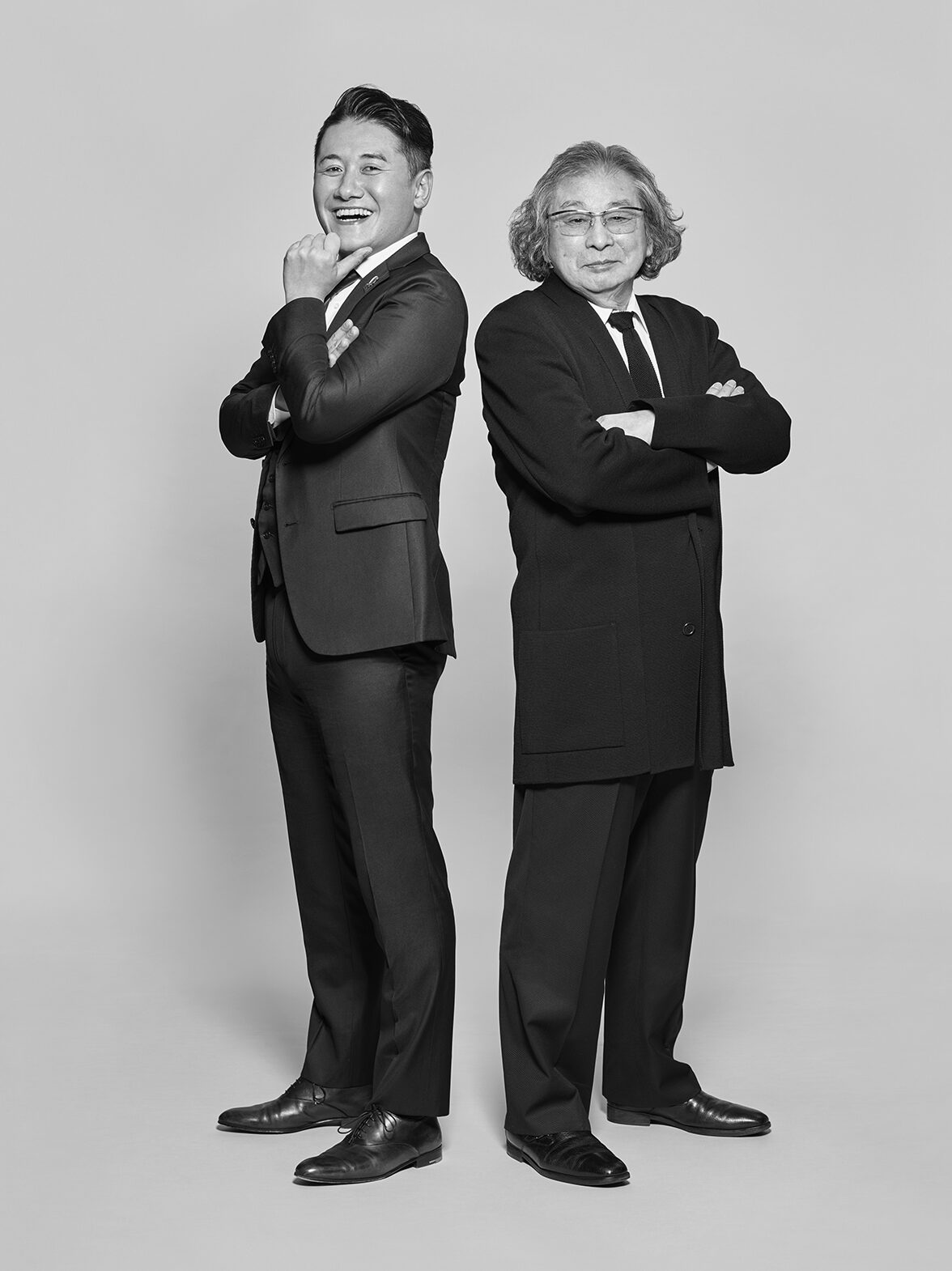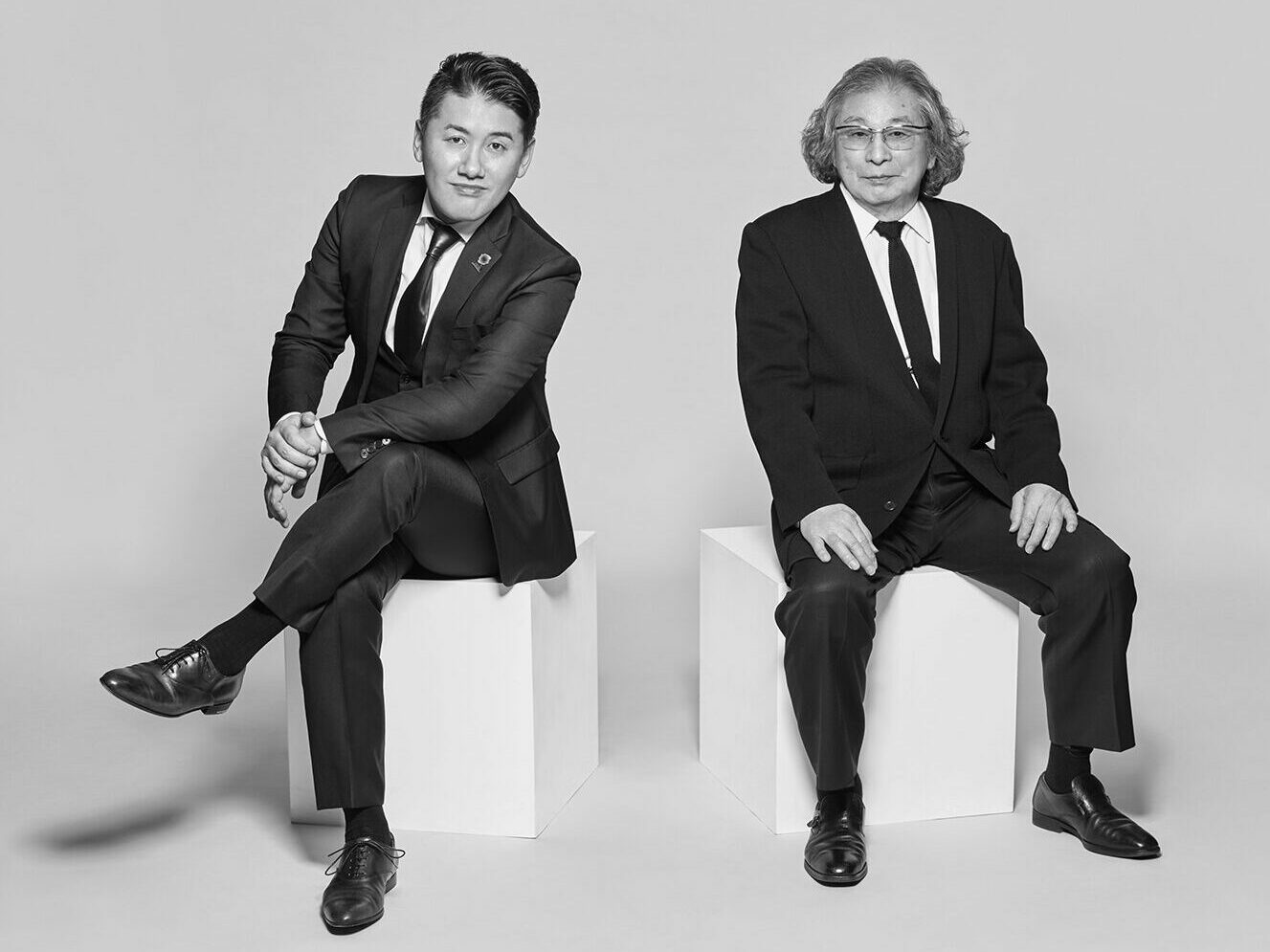
What's Design Thinking? What to be as a Designist?
Motoo Nakanishi, a design consultant, and Taihei Noda of JBIG talked about "management, brand and design". [Part XNUMX]
P.G.C.D.Ten years before the birth of JAPAN, the representative, Taihei Noda, studied under Motoo Nakanishi, a leading figure in Japanese-style CI (corporate identity).Since then, the management strategy design learned from Mr. NakanishiP.G.C.D.It supports the foundation of JAPAN and has a great influence on its activities as a company.
Mr. Nakanishi and Noda, who reunited for the first time in 10 years on the themes of "design thinking in a company" and "what should be as a designer", talked about each other's experiences and thoughts, and it was a very profound dialogue, so the first part We will deliver it twice in the second part.This time is the first part.
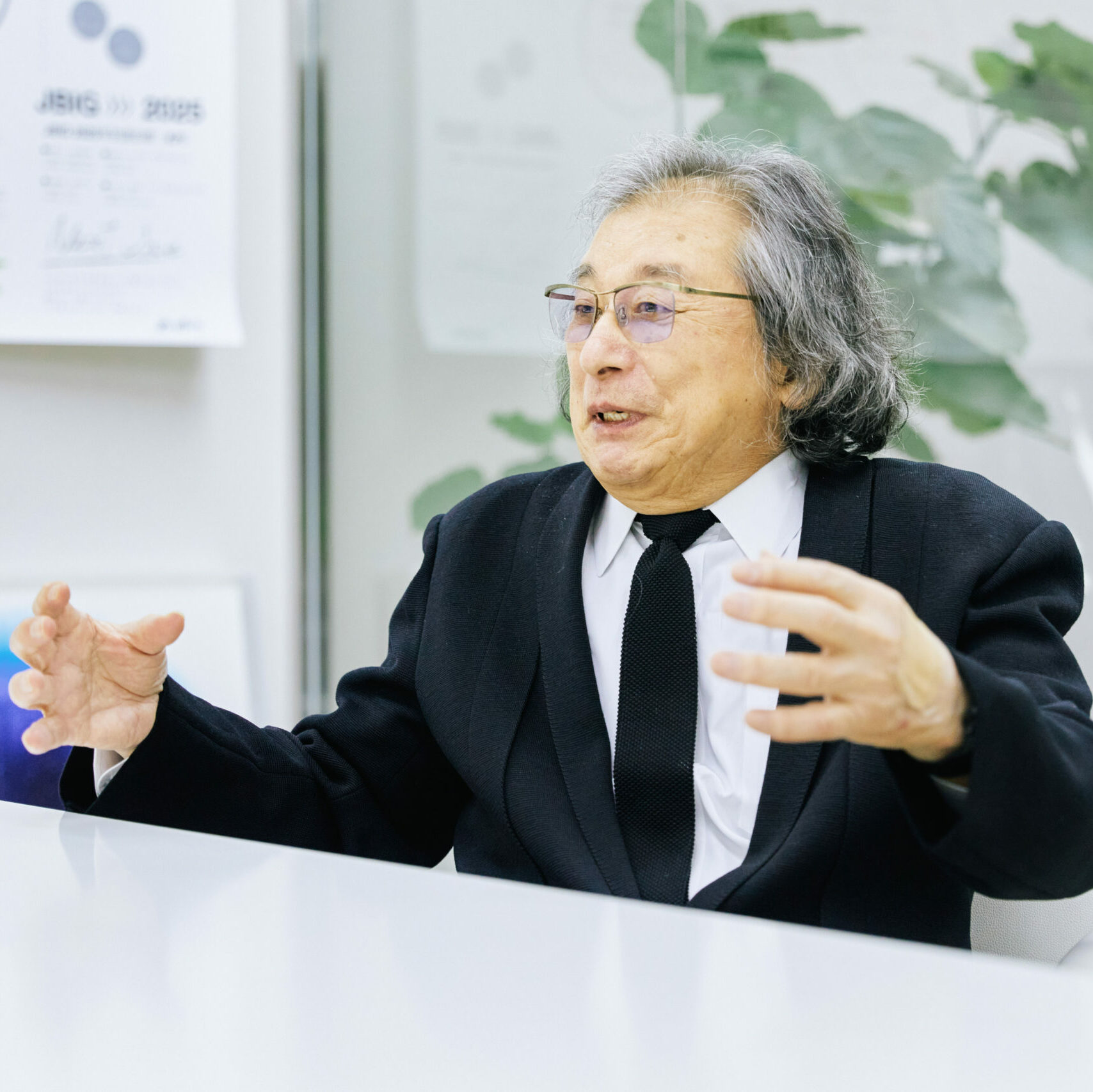
Design consultant
Nakanishi Motoo Office <PAOS> Representative
Motoo Nakanishi
Born in Kobe.After working at Kuwasawa Design School, graduated from Waseda University Faculty of Letters, Department of Fine Arts.Dropped out of the graduate school of arts.
● 1962 While attending university, announced "Proposal for establishing Waseda University School of Design" that a base for design education should be established at a university.
● 1964 Co-authored Japan's first management strategy design book "Design Policy / Formation of Corporate Image" with Ryuichi Hamaguchi.After that, he edited about 50 volumes.
● 1968 Established PAOS Co., Ltd.Through repeated research and practice on the theme of establishing a design theory understood by business owners and developing methods, he has worked on CI, brand & business strategy design of about 100 companies, and has released many success stories and representative cases to the world.
● 1969-2019 Nishi-Shinjuku skyscraper street fixed point shooting. The record of 50 times in 228 years is the longest in the world.
● Established PAOS NewYork in 1980, PAOS Boston in 1985, PAOS Beijing in 1995 (Hakuokuji Beijing Corporate Design Co., Ltd.), and PAOS Shanghai (Shanghai Paosnet Image Design Co., Ltd.) in 1997.
● April 1997 PAOS was taken up as an example in business school textbooks at Harvard University and Stanford University, and was invited to give a commemorative lecture.
● 1998-2000 As the G Mark (Good Design Award) system was privatized from the sponsorship of the Ministry of International Trade and Industry (currently the Ministry of Economy, Trade and Industry), he promoted system reform as the chairman of the general examination committee.
● 2004-2008 Visiting Professor, Institute of Strategic Design, Waseda University. 2006-2010 Participated in the university's public relations office.
● 2010-2018 New Business School "STRAMD (Strategic Management Design Human Resource Development Course)" presided over (Tokyo / Osaka).
● From October 2015 Member of the Tokyo 10 Olympic and Paralympic emblem selection committee.
● 2017 Chairman of the symbol mark examination committee for the Japanese culture legacy creation program “beyond 2020”.
● 2018 Professor Emeritus of Tung Fang Design Institute, Taiwan.
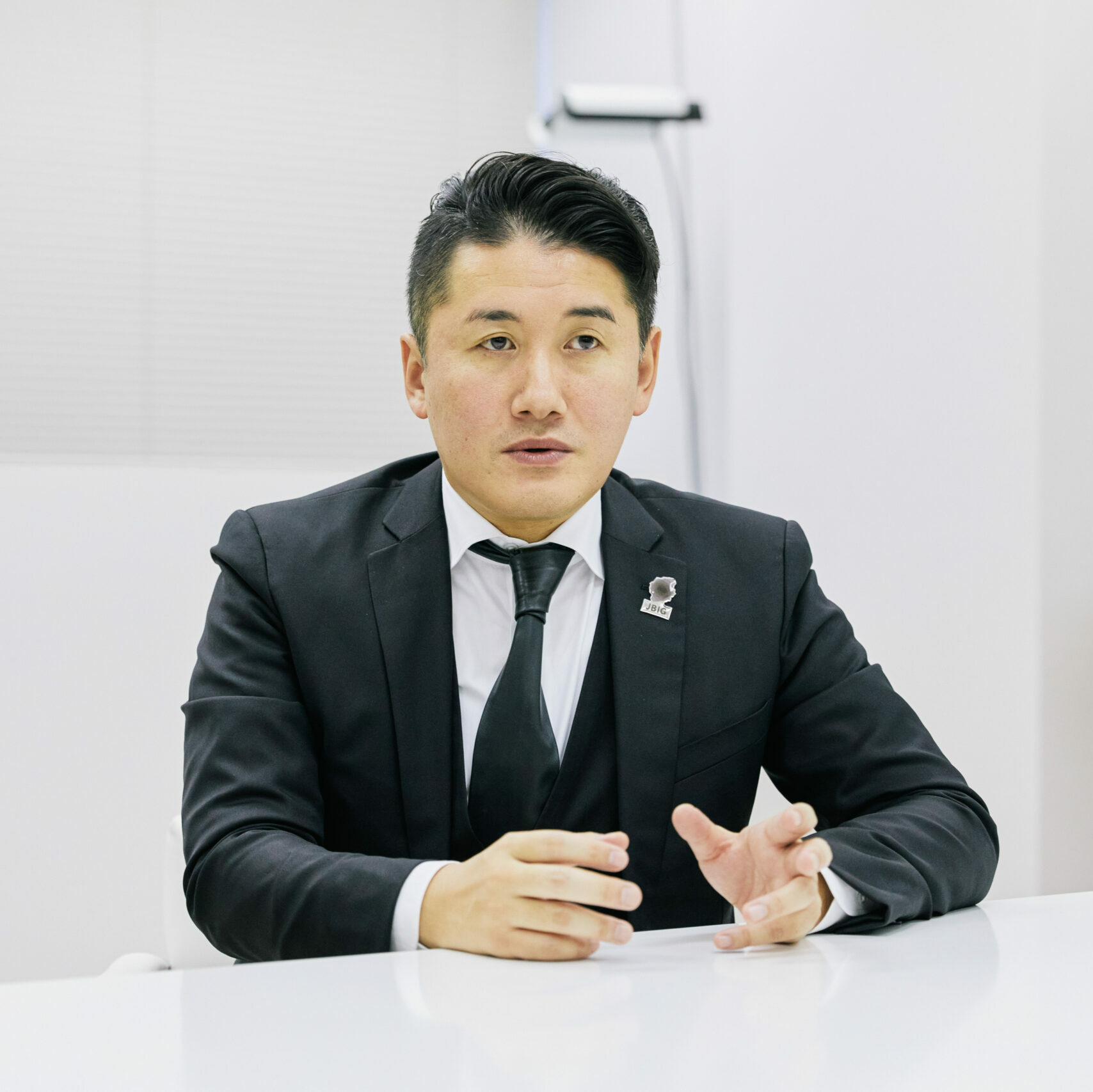
Representative Director and CEO of JBI GROUP (JBIG) Co., Ltd.
Ltd.P.G.C.D. JAPAN CEO
Taihei Noda
Born in Fukuoka Prefecture in 1979. In 2010P.G.C.D. JAPAN is established. Develop and sell skin care and scalp care products to increase the number of people who change their age into beauty. In 2019, JBI GROUP, a holding company, was established. Under the corporate philosophy "Pay forward", we will create sustainable products and businesses with the mission of "increase the number of people who make the world happy" and contribute to society and the future.
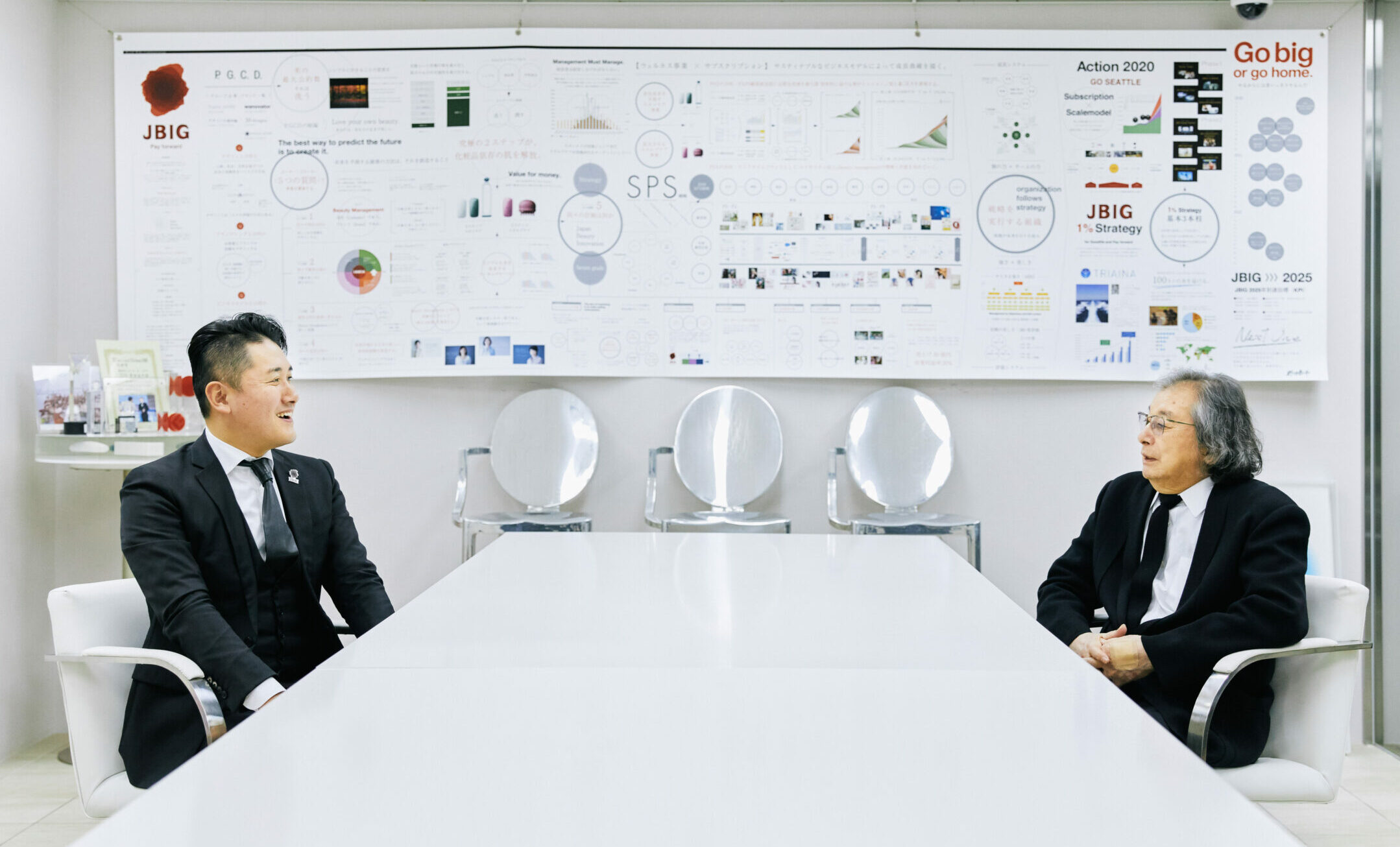
The 21st century is an era of thinking about how to utilize design in management
What is important in the mature age is "impression"
Taihei Noda (hereinafter Noda) The encounter between me and Professor Nakanishi dates back 10 years.It was because I attended the business school "STRAMD" that my teacher started.
Motoo Nakanishi (hereinafter referred to as Nakanishi) It was a pretty good encounter.I still remember Mr. Noda always sitting in the front seat and raising his hand and asking questions immediately after each lecture.
(I.e. At that time, I experienced a big setback as a manager, took the weight of responsibility as "Why did I make a mistake?", And regretted that I caused trouble to many people and made me unhappy.And, partly because of the regret that I failed, I was wondering how I could become a manager who would make more people happy and happy.However, there were days when I couldn't make a move because I was spinning around as to what to do.I didn't know what to start with, so I couldn't take the first step.So, in the winter of 2009, I was introduced to an acquaintance and hit the gate of STRAMD with the thought of clinging to straw.
Looking back on it now, I think that at that time, I was inevitably designing my own particularity, and I was not able to deliver a design in a narrow sense to customers and create a design in a broad sense that makes people happy. I will.
However, STRAMD, a learning center for the idea of design thinking, grasping design in a broad sense rather than in a narrow sense, connecting management and design, and innovating in a sense, changed my life. It was.
中西 STRAMD started with the theme of "design thinking for corporate management".This educational program was launched with the intention of comprehensively grasping innovation in each field, such as corporate design, communication, management, and human resource development.In the last 10 years, about 200 graduates have fled in Tokyo alone, and the course has started in Osaka.
What I was particular about when opening STRAMD was not trying to teach and remember anything to the students.In education, it is important to inspire and inspire.In that sense, I was able to convey my intentions to the teachers of each instructor, so I think the curriculum was rich in variety.
If the graduates are currently able to "cultivate human resources" or achieve some results by making use of what they have learned at STRAMD, I think it would be good to start this program.
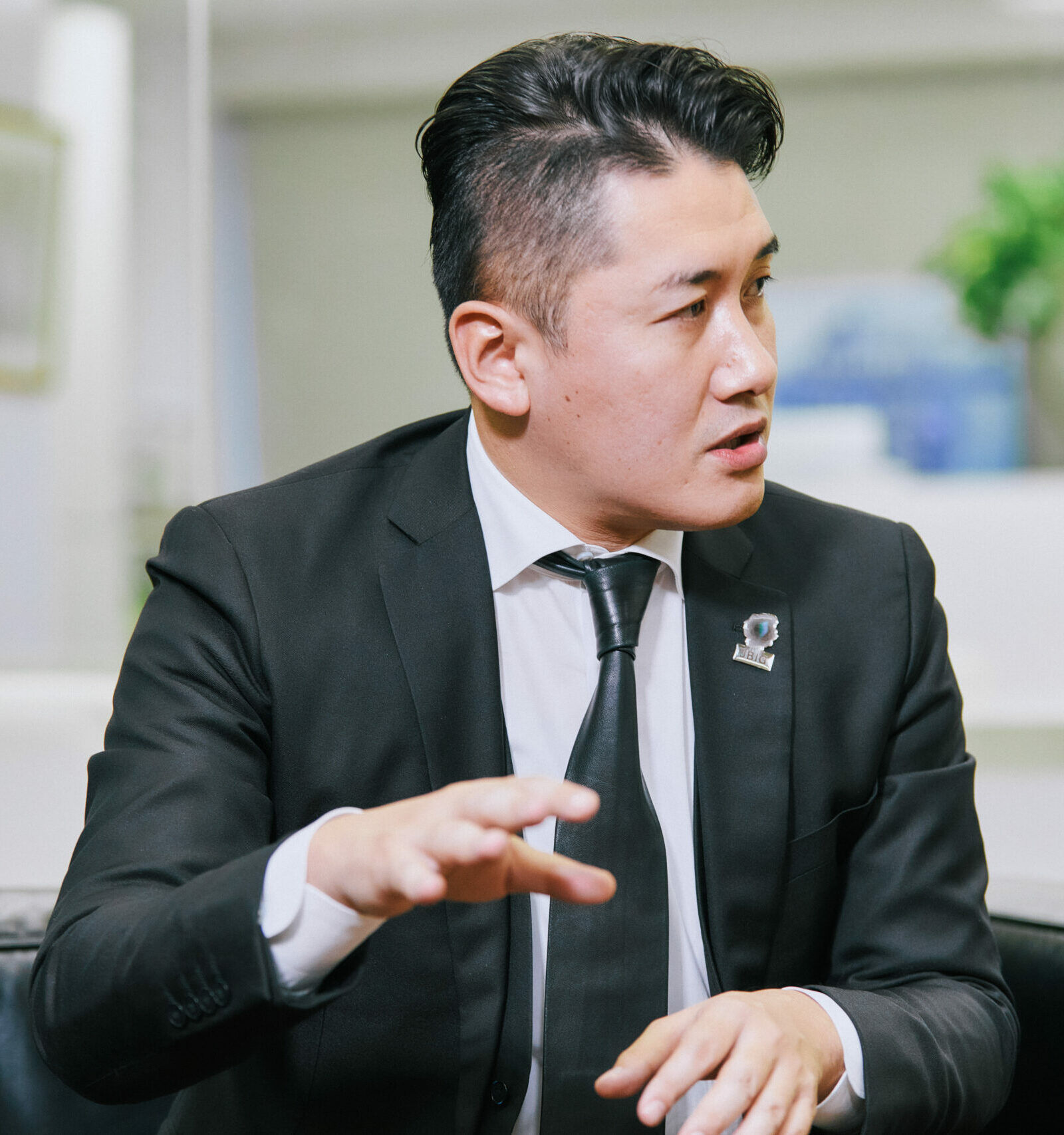
(I.e. I still cherish the teacher's book "PAOS Design" (published by Kodansha).If you read it again, it will be a great learning experience.Even now, none of the logos and ideas have faded, and it's new.As for the theme of design, the efforts of i.school (University of Tokyo) and d.school (Stanford University) have been attracting attention since around 2010, and more people are learning about design thinking.However, I think that the last 10 years have been a time when everyone is searching for "how to utilize design thinking in management."
中西 Case studies are basically very important in business schools.However, at that time, there were few other case studies involving design.In that respect, I have always put the field of design at the center of my work, so I made use of it in STRAMD.
(I.e. It's been 10 years since STRAMD was started, but how did the teacher see in the theme of design that Japanese people are working on for the last 10 years?
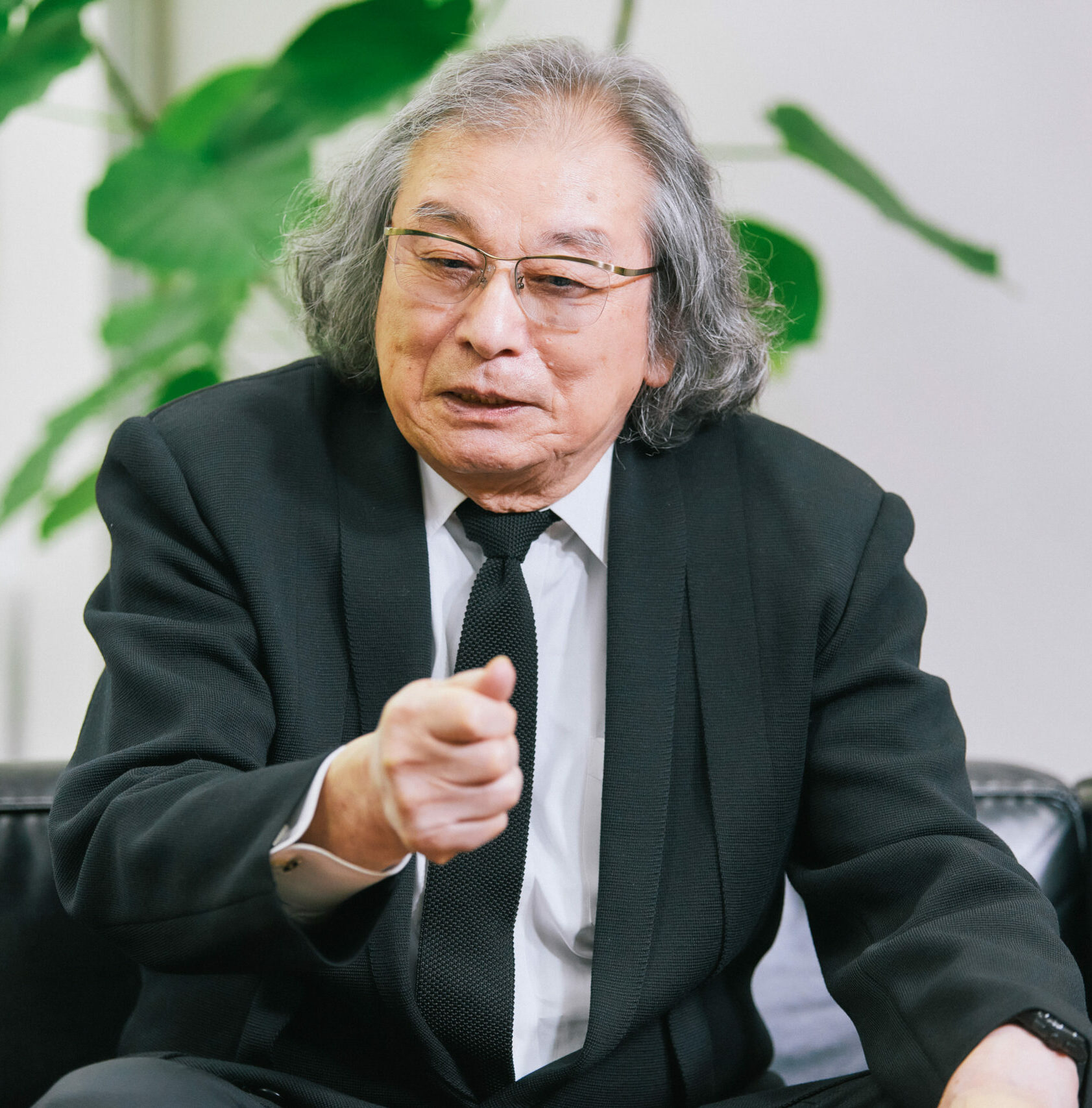
中西 It may be early or late, but I think it's basically as expected.Japan was in the "era of growth" until about 10 years ago, and now it has entered the "era of maturity."The 21st century is still a human era when we think about what is important and where the reason for design is in a mature society. I feel that the momentum to reconsider that "human beings are important" has increased.
There are three types of human power: "physical strength," "intelligence," and "sensitivity."As society matured, the important factor came to be recognized as "impression", but unlike physical strength and intellect, emotion cannot be quantified.In my work, I actually develop brands and logos and think about how to utilize the design in my business, but in the end, "How much sales have increased and how many good people have grown. The numerical result is the result.I myself make judgments based on intuition through trial and error, and this is exactly what I feel.In that sense, I think we are in an era of thinking about how to make use of design and creating techniques to make use of it.
"Primitive therapy" is important for the happiness of the world
(I.e. As society matures, when I established JBIG, I set a social responsibility goal of "Beautiful people and the earth."Behind this is the "thinking about design in a broad sense" that I learned at STRAMD.What kind of design approach should we take to make society, nature, and human beings happy, not just ourselves?I continue to think about how to design management and business to achieve it.
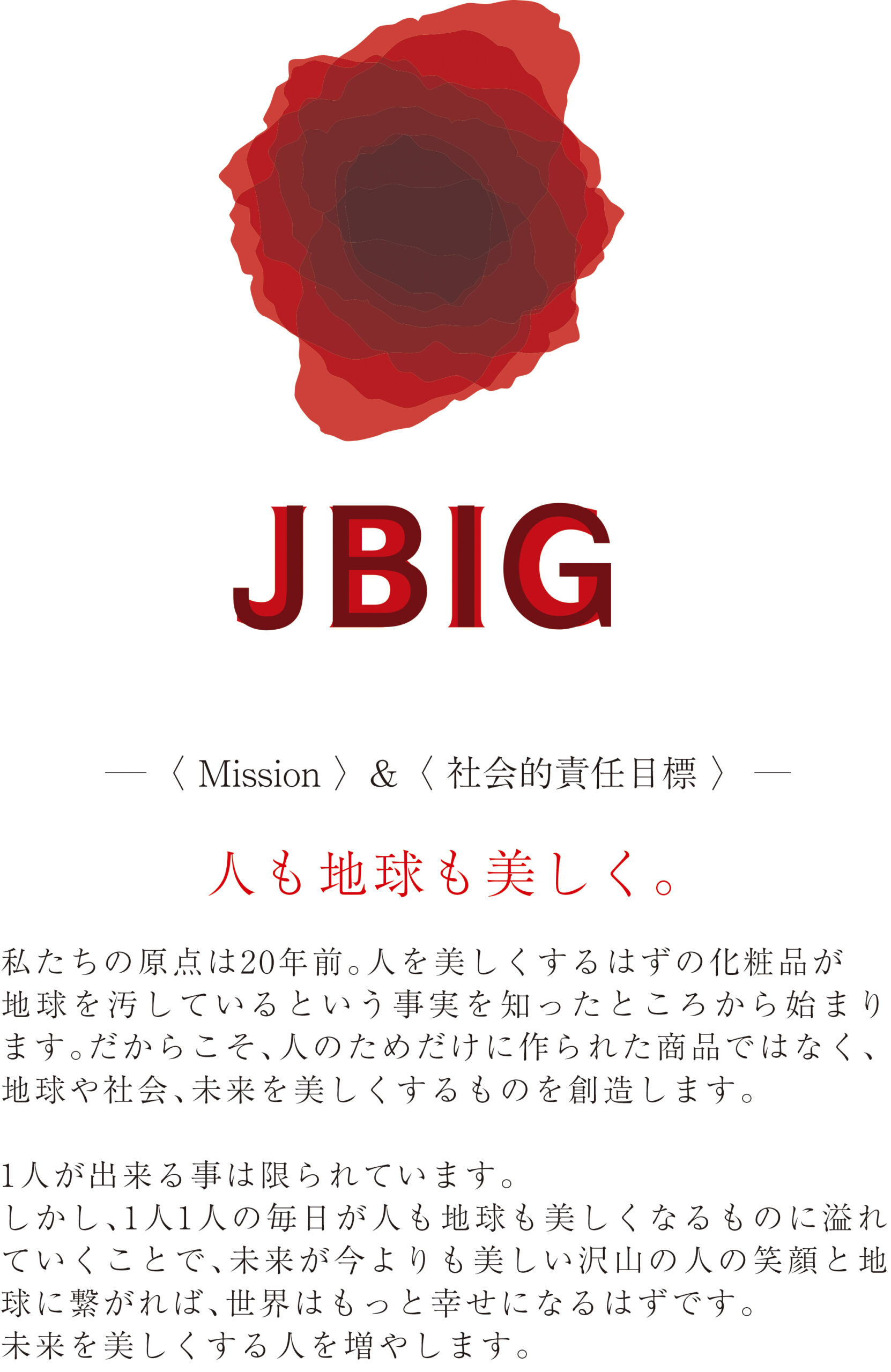
The other day, I visited the Minister of the Environment Shinjiro Koizumi for a presentation on environmental issues.When I talked about Minamata disease in Kyushu, which is my hometown of my creation, the minister said, "The reason why the Ministry of the Environment was established is Minamata disease. Since then, Japan's awareness of environmental issues has changed." You said.However, 70 years after the outbreak of Minamata disease, the problem of microplastics is becoming more serious. It is said that by 2050 there will be more plastic floating in the ocean than fish swimming in the ocean.The problem is that when a fish eats microplastic released into the sea and a human eats the fish, the plastic accumulates in the human body.In addition, it causes environmental destruction such as the death of coral.But when I think about it, I think this story is the same as mercury in Minamata disease.
General cosmetics also contain a lot of microplastics, and despite advances in technology, they end up turning around and destroying society, nature, and humans, thinking only for humans. ..I wonder why so many manufacturers cannot make products that take the global environment and the human body into consideration.Even though it is a mature society, I even feel angry that the company's way of thinking about the environment has not progressed.How should we deal with these issues?
中西 I think the big thing is on what scale you think about things.For example, the most difficult illness is urgent "emergency medical care."On the other hand, "symptomatic treatment" is the usual way to go to the hospital.But now, thinking about what Mr. Noda said is about "preventive medicine" and "primitive therapy."However, in general, it is difficult to reach the root therapy, and the reality is that there is no choice but to choose the symptomatic treatment in front of you.Therefore, I don't think it's easy to come up with the best solution for problems such as microplastics.It's too late when you realize it.
(I.e. Really so.To give another example of environmental problems, the corals on the coast of Okinawa are now white.When I was a kid, the coral was seven colors, so the sand and the sea were shining, but now it's almost dead and white.However, even if the beauty of the sea is 7 and the white coral is protected by 100% compared to the previous year, it will never return to 98 colors.
中西 It's a bleaching phenomenon.People who don't know say, "White sand is beautiful."
(I.e. Previously, my teacher told me, "Not only do we build up the present, but we also pull back from the future we are aiming for and think about design."However, in terms of environmental issues, it seems that we are trying to control the current situation with a reduction of 100%, assuming that the current situation is 98%.
中西 The Japanese have responded to environmental issues with the idea of receiving feedback and encouraging improvement.Since ancient times, Japanese people have been enthusiastic about studying and sensitive to information, so I think that it is time for this country to take the lead in producing new ideas and results by making use of this DNA.However, there are difficulties when it comes to thinking based only on Japanese standards rather than on a global scale.
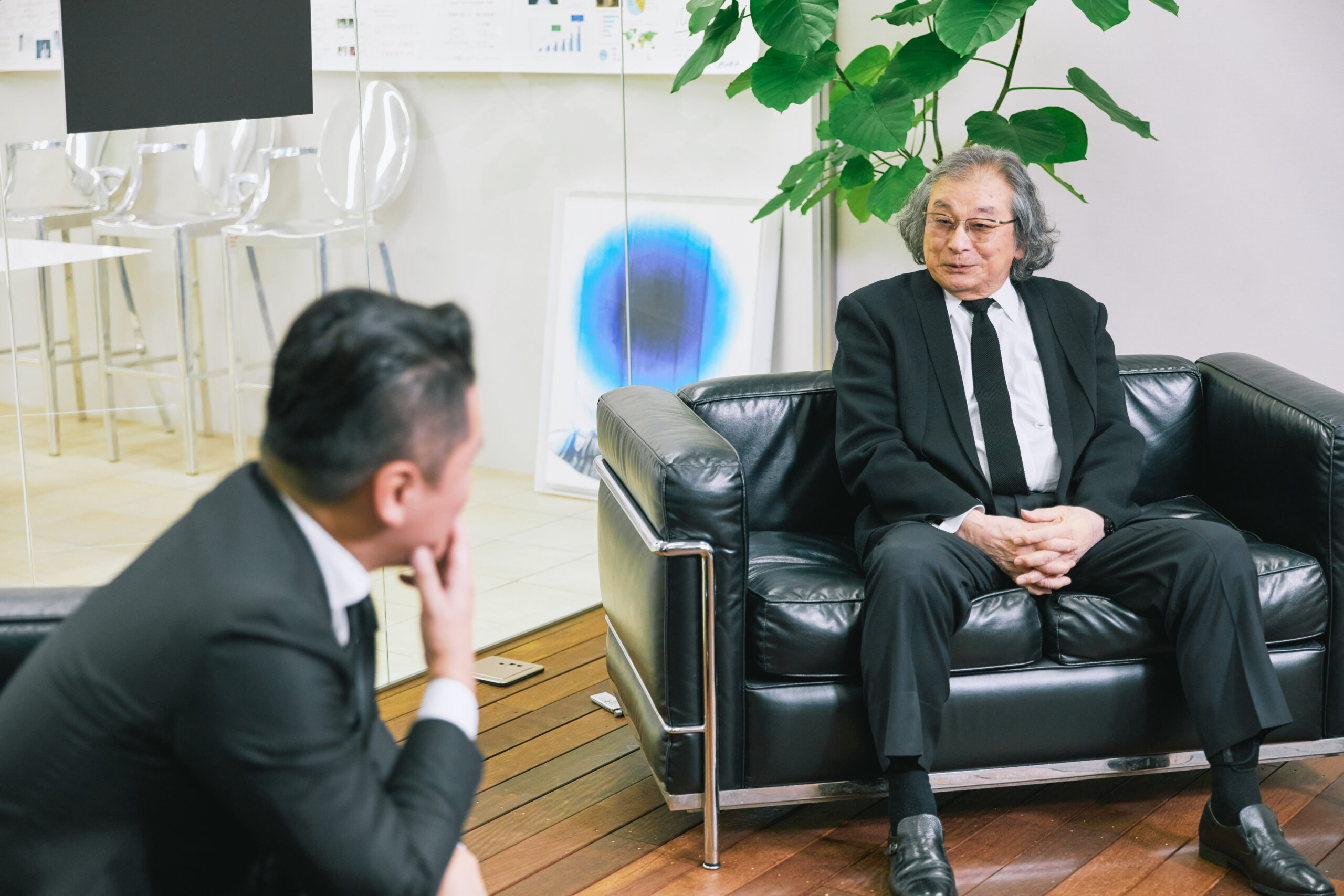
Open up the world with the "power" that Japanese people have
The important thing is to keep improving "impression"
(I.e. Japan also had a great deal of power in the world of art.The world of art is really deep, including the history of Europe where art was born from the royal family, including the Impressionists, and the history of America, which has continued to overwrite its own history with contemporary art.On the other hand, various arts and wonderful designs, including Japanese ukiyo-e, had an influence on European Impressionists as Japonism. The "Cool Japan Strategy" by the Ministry of Economy, Trade and Industry started around 2010, but at that time, the teacher said, "It's not the case when you say cool now."In the end, the Cool Japan strategy only produced results in some industries such as anime and tourism, and I feel that the teacher's anxiety was right.How can Japanese design have a positive impact on society and the world in the future?
中西 "Appeal with the principle of design."In other words, I think it depends on how much social value and role can be created by design.In design, the "impression" I mentioned earlier is very important.The Japanese have a high sensitivity and a desire for knowledge for a long time.Admiral Perry, who arrived at the end of the Tokugawa shogunate, later became the principal of the Naval Academy, and his diary has a story that symbolizes it.For example, when there is a rare bird, Westerners immediately jump out with a gun, but Japanese fly with a picture book.This aesthetic sense is rare even in the world.

(I.e. The Japanese have the spirit of loving nature and cherishing beautiful things.
中西 I think this is the result of a combination of various conditions, including the changes of the four seasons, but in the future, we should make more use of the fact that Japanese people love nature and are rich in learning. I think it is.
(I.e. How can we continue to improve this "feeling"?
中西 It's quite difficult to hone your sensibilities.In the end, it's like a matter of judgment.It's very important to look at good things and think about why you and others find it wonderful and attractive.Isn't it important to have something like daily training?
The other day, when I was making a corporate logo, one person asked me, "Why do you draw hundreds of sketches when only one is chosen?"Certainly, one may actually be selected, but when you create hundreds of ideas, the essence gradually becomes apparent.In this regard, I think we are doing something very important in terms of preventive medicine, which I mentioned earlier.And one more thing, when the logo is decided, it is often convinced that "this is the best because it is selected from that number."
(I.e. It's also important to say, "I'll give you hundreds of ideas to decide on one thing. If you show that many, you'll be convinced by the people around you." Is also necessary to create "impression".It's a strange story, but for those who create only a few or at most 1 or those who compromise every day and those who think about creating 2 each time, Does that mean that the scale of "impression" is different?
中西 It is certain that if you make a lot, you can see what you cannot see. It also becomes clear that there is a possibility in such a part.It is a state where "impression" is being refined.
(Second partfollowed by)
